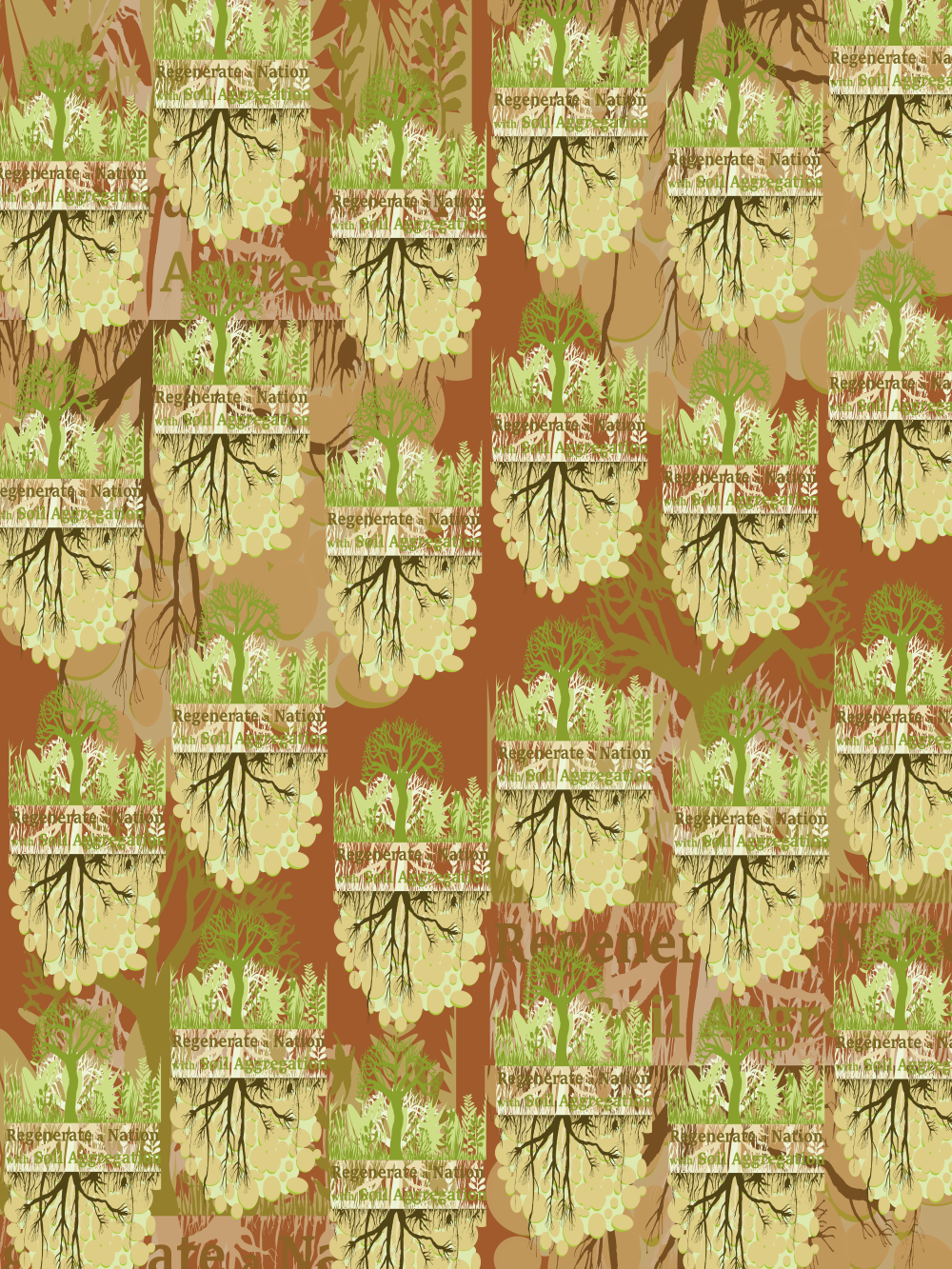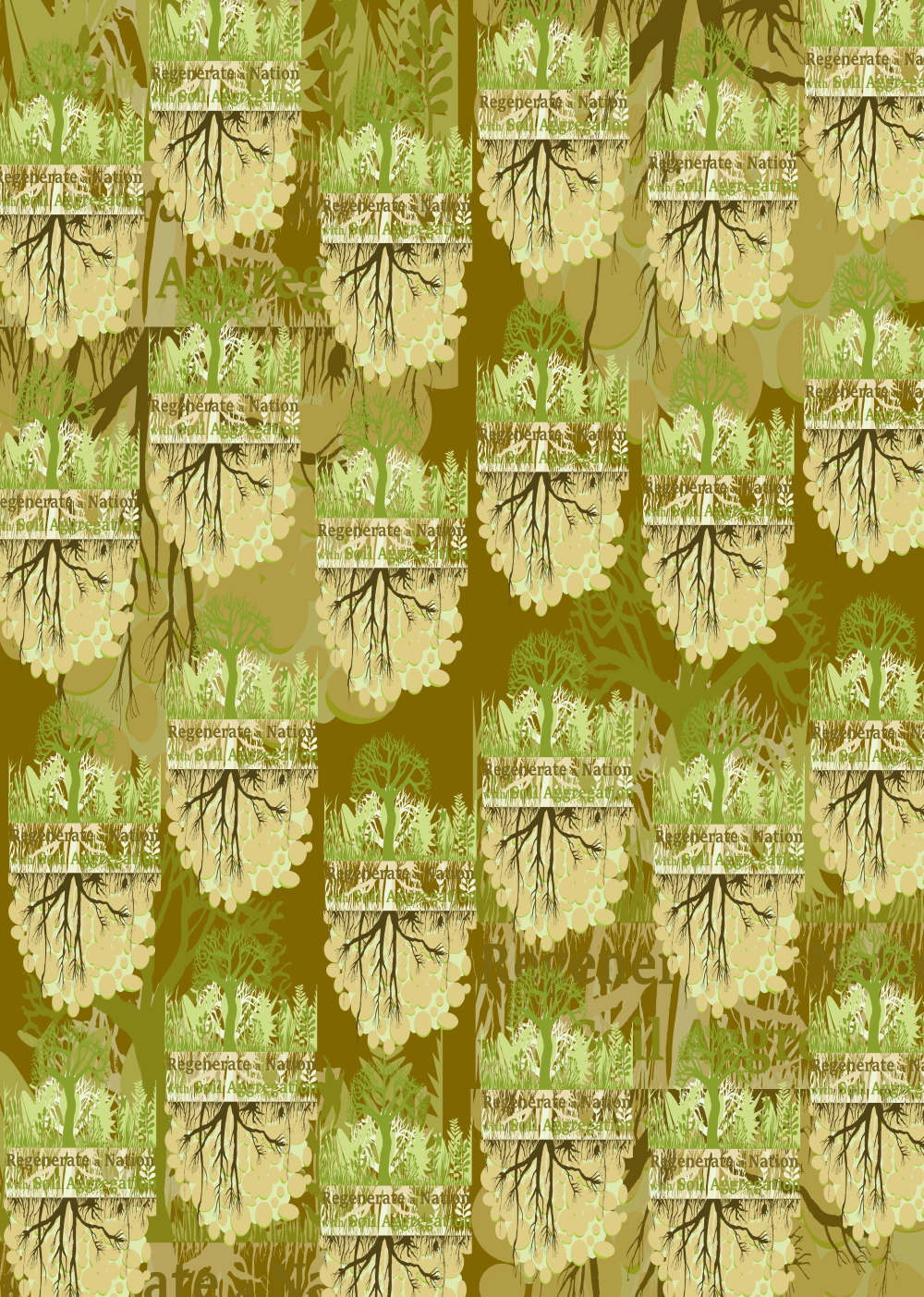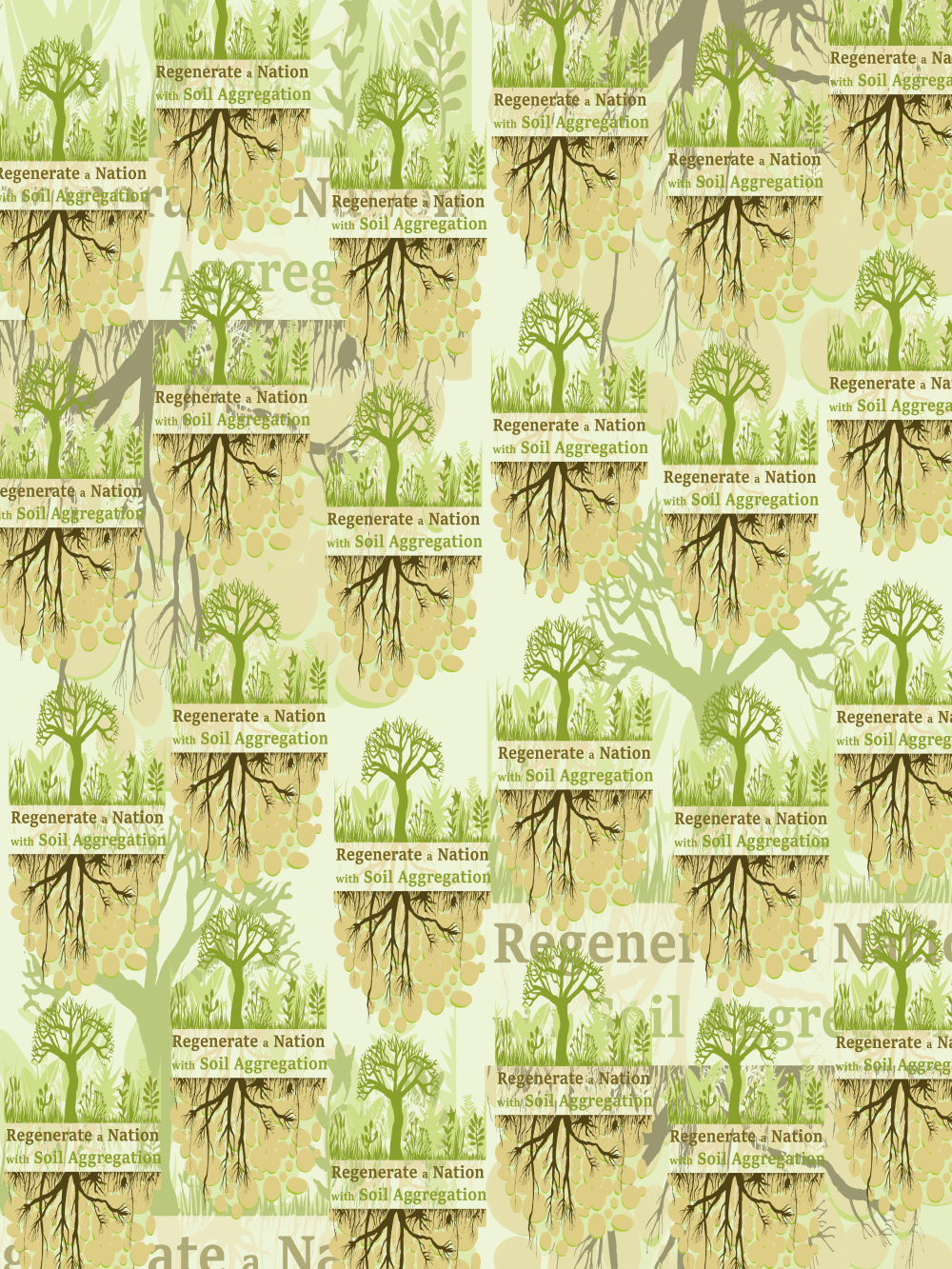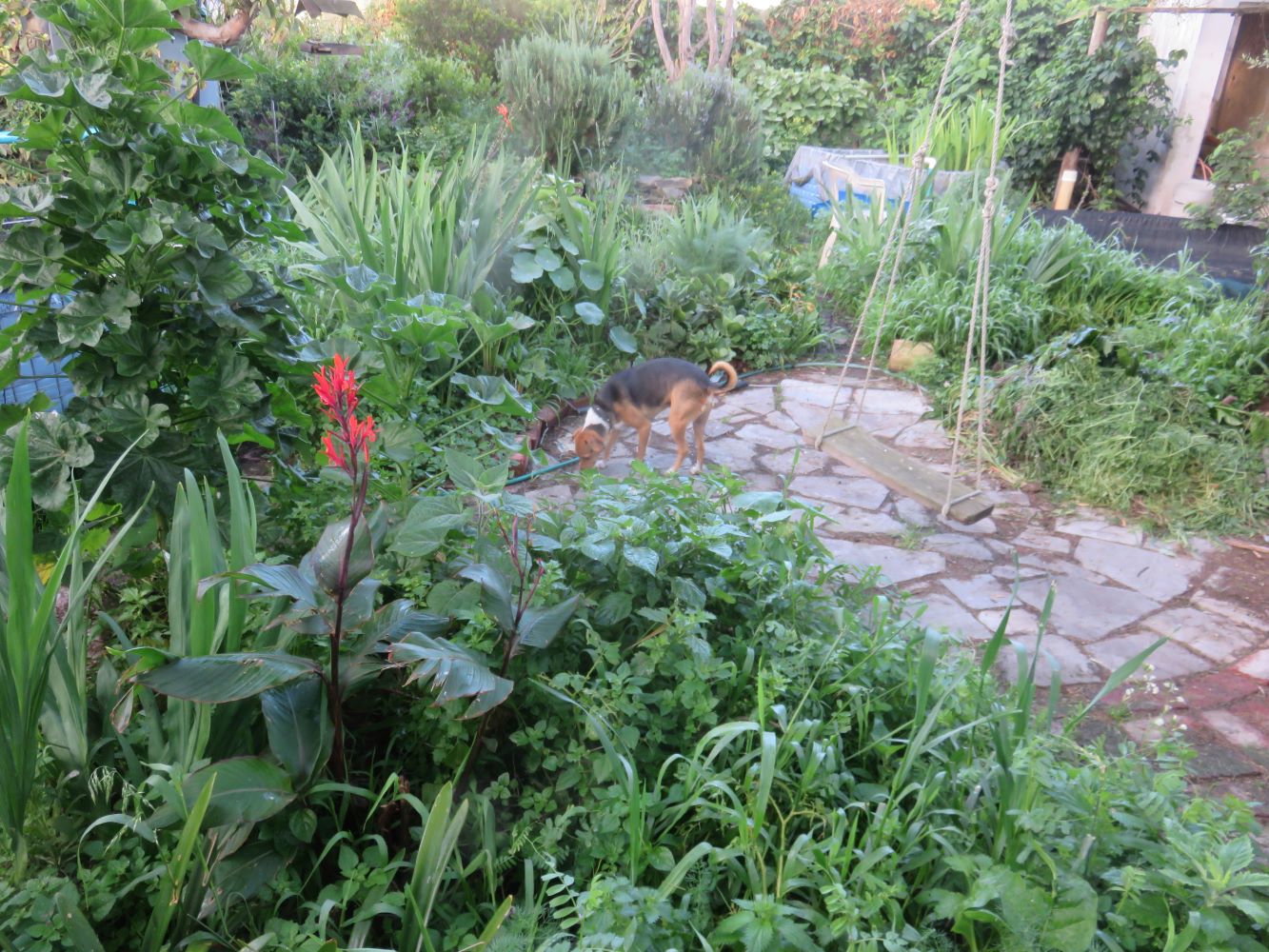Dear Reader, in this age of AI created content, please support with your goodwill someone who works harder to provide the human-made. Sign up in the righthand column or bottom of this page. You will receive my hand illustrated monthly newsletter RESTORE NATURE and access to the biodiversity garden design course as I write...and nothing else, I respect your time.
We must regenerate soils to lessen the impact of climate change
 'Regenerate a Nation with Soil Aggregation' This is the single print design on our downloadable and printable greeting cards. Larger prints can be used as posters, or framed, or serve as book covers for journals. Its all up to your creativity !
'Regenerate a Nation with Soil Aggregation' This is the single print design on our downloadable and printable greeting cards. Larger prints can be used as posters, or framed, or serve as book covers for journals. Its all up to your creativity !We must regenerate our soils. When I look down from the Cederberg
mountains in the Western Cape of South Africa I want to cry. Below lies
the vast coastal plain of the Swartland, which has been turned into a
red desert to grow wheat. Tiny slivers of the old vegetation are left,
like dark pencil outlines around fields and dams. Our beautiful species rich
Cape Renosterveld which gave the world many of its garden flowers.... is
gone from the landscape of its origin.
What have they done to our earth in their ignorance of better, gentler ways of doing things and need for money, pushing the growing of a crop not suited to this area. This type of farming has multiple negative effects on food security and global climate.The effect is felt far beyond our country's borders and high high up in the top cloud layers. As you read this series of three articles you will understand more of how these mechanisms work.
 Our downloadable gift wrap paper to print at home. This is the Regenerate a Nation design on a red ochre background, in memory of our vanished Renosterveld. Available in sizes appropriate for small and for larger gifts, with a matching card.
Our downloadable gift wrap paper to print at home. This is the Regenerate a Nation design on a red ochre background, in memory of our vanished Renosterveld. Available in sizes appropriate for small and for larger gifts, with a matching card.Why is regenerating soils a solution ?
Simply put, an answer to saving the world from global warming is under our feet. Put the carbon underground where it builds soil and not in the air where it is heating the planet. Using regenerative practice, healthy top soil can be rebuilt. Depending on context, this solution can cost nothing as it uses natural processes.
If we support the regeneration of our soils they can lock down enormous amounts of carbon. The soils are bigger carbon sinks than trees. Wetlands are the most effective land based sinks and the ocean is the most effective of all.
But we cannot rely on the ocean to take care of atmospheric carbon. The ocean has already absorbed so much CO2 from our combustion civilization, it is becoming acidic. This is killing coral and affecting oxygen producing plankton, on which we depend for life. Wetlands are highly endangered and there are few natural wetlands left.
Sinking carbon in the ocean does harm, while sinking carbon in soil heals it, turns it into a beautiful natural sponge and makes it fantastically fertile. Even if we stopped emissions tomorrow the ocean carbon will continue to escape into the air and it will take hundreds of years to bring down atmospheric carbon without the help of sequestration in soils.
But it is not only carbon we need to think of. Regenerating soil and re-establishing plant cover would heal the hydrology cycles that cool the planet (Dr Walter Jehne), and that has a larger effect on climate than carbon.



Some variations of our gift paper you can print at home. Available in 30 by 40 inch for larger items and A4 or letter size for small precious things.
Feeling overwhelmed by the size of the problem ?
What can you do to regenerate soil on land you don't own ?
You have a chance to help regenerate the soils of the world and help bring down atmospheric carbon concentrations. The first step is to become informed. Join Kiss the Ground or the Carbon Underground. Find out about the liquid carbon pathway and research on Dr Christine Jones, Joel Salatin, Allan Savory, Gabe Brown.
Support regenerative farmers with your buying power. Support afforestation programs. Find out which of your local farmers manage soils so that they can become carbon sinks. Pressure retailers to sell regenerative products. It is not easy in South Africa where this is not as well known as in the US. I think one way may be to name and shame. Write in public and share photos on social media when you see destructive farming practices with naked soil and erosion. Find out which brands are involved, like wine, wheat, bakeries etc. and complain loudly in public. Those industries based on export, like wine will soon feel the pressure if you have an international network.
There was never a time like the present to start to
REGENERATE !
Knowledge of the environmental healing in regenerative land management and gardening is become more widely spread, but we need everyone to be sensitized to shift practices and the carbon count.
I worried a lot about global warming and began to be lamed by despair until I encountered the people from Kiss the Ground who showed me that there is a way forward. They have copious backup for their regenerative strategy and quote many scientific sources from across the board, nutrition, meteorology, forestry, agriculture and soil science.
------
------
------
Regeneration and the liquid carbon pathway
Restore Nature Newsletter
I've been writing for four years now and I would love to hear from you
Please let me know if you have any questions, comments or stories to share on gardening, permaculture, regenerative agriculture, food forests, natural gardening, do nothing gardening, observations about pests and diseases, foraging, dealing with and using weeds constructively, composting and going offgrid.
SEARCH
Order the Kindle E-book for the SPECIAL PRICE of only
Prices valid till 30.09.2023
Recent Articles
-
garden for life is a blog about saving the earth one garden at a time
Apr 18, 25 01:18 PM
The garden for life blog has short articles on gardening for biodiversity with native plants and regenerating soil for climate amelioration and nutritious food -
Cape Flats Sand Fynbos, Cape Town's most endangered native vegetation!
Apr 18, 25 10:36 AM
Cape Flats Sand Fynbos, a vegetation type found in the super diverse Cape Fynbos region is threatened by Cape Town's urban development and invasive alien plants -
Geography Research Task
Jan 31, 25 11:37 PM
To whom it may concern My name is Tanyaradzwa Madziwa and I am a matric student at Springfield Convent School. As part of our geography syllabus for this
"How to start a profitable worm business on a shoestring budget
Order a printed copy from "Amazon" at the SPECIAL PRICE of only
or a digital version from the "Kindle" store at the SPECIAL PRICE of only
Prices valid till 30.09.2023







